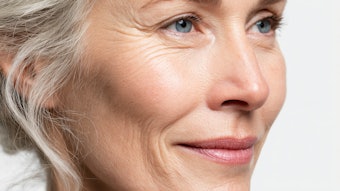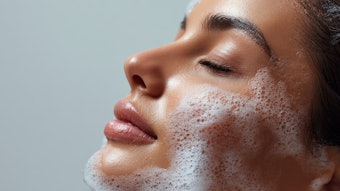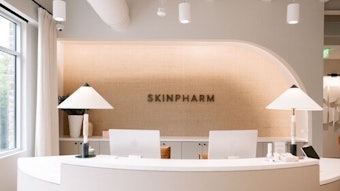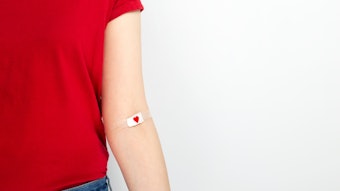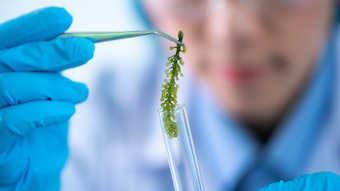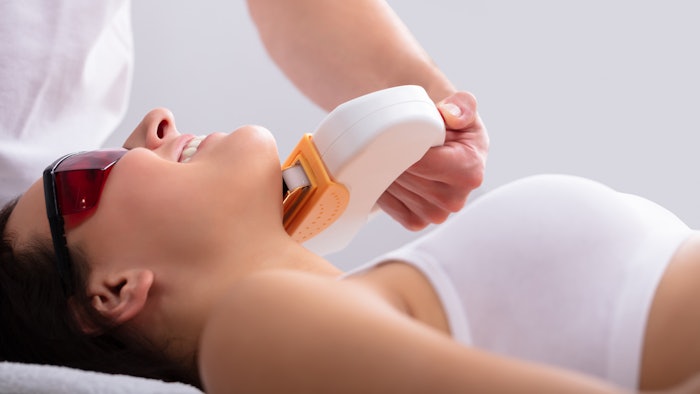
A group of researchers from Cosmetic Laser Dermatology in San Diego, California performed a prospective study on intense pulsed light (IPL) settings and clinical endpoints with the goal of helping practitioners better conceptualize and finetune their IPL device settings in order to produce the most effective and safest clinical outcome.
Working with the Stellar M22 Universal IPL from Lumenis, Michael B. Lipp, DO, Kunal Angra, MD, Douglas C. Wu, MD, PhD, and Mitchel P. Goldman, MD, tested several filters (515 nm; 560 nm; 590 nm and 530–650; 900–1200 nm vascular filter), fluences, pulse durations and pulse numbers (ie, multiple sequence pulsing or MSP).
They marked out a 4x3 grid on the back of a 65-year-old male, Fitzpatrick skin type III and treated each square with one of four different filters (515 nm, 560 nm, 590 nm, 530–650 nm and 900–1200 nm vascular filter) and three pulse durations (4 ms, 6 ms and 10 ms). Response and outcomes were assessed through digital photographs.
They saw the most pronounced postpprocedure erythema response with increasing fluence, decreasing wavelength, fewer pulses and shorter pulse duration. The vascular filter had a relatively more robust erythema response compared to the 590 nm filter, which was comparable to the 560 nm filter. This trend in erythema continued at 24 hours postprocedure.
One-week follow-up photos showed further resolution of the erythema with some crusting in areas treated with the 515 nm filter and a single pulse at all fluence ranges and pulse durations, as well as 560 nm single pulse squares at 20 J/cm2 for all pulse durations. All crusting resolved by the two-week follow-up visit, but some of the crusted areas (515 nm, single pulse, 10 ms pulse duration, 18 and 20 J/cm2 fluence) was replaced by well-demarcated hairless hypopigmented square-shaped patches.
At four week follow-up, the areas treated with the 515 nm filter showed greatest improvement in erythema and pigmentation with clear demarcated areas of improvement observed with the longer pulse duration (ie, 10 ms), single pulse and high fluences (ie, 18 and 20 J/cm2).
The authors noted areas with a greater erythema response during the healing process showed improved clinical response at the four-week follow-up visit. However, more aggressive settings also increased the risk of hypopigmentation and hair loss. In addition, the subject was a Fitzpatrick skin type III, therefore these settings and endpoints may not be representative of the greater risks to patients with darker skin types.
“Clinical endpoints when treating conditions such as rosacea, melasma, poikiloderma of Civatte and benign pigmented lesions (ie, lentigines and ephelides) is mild to moderate erythema with some mild graying of the pigmented lesions. Vasospasm or coagulation of the vessel is the endpoint when treating facial, truncal and leg telangiectasias. Performing a test spot and observing tissue response after a few minutes is advised before proceeding further with treatment,” they wrote.
The study was published in the Journal of Drugs in Dermatology (February 2021).


